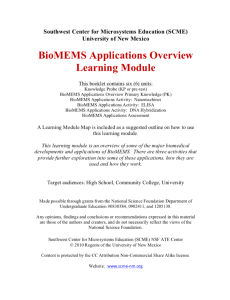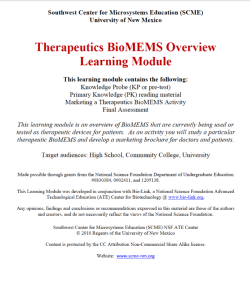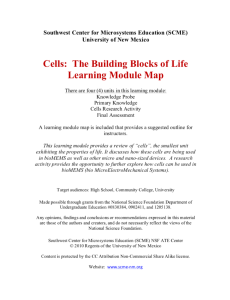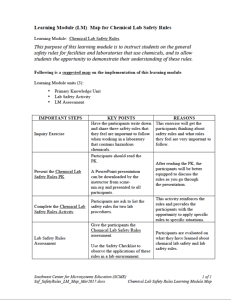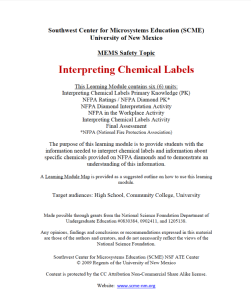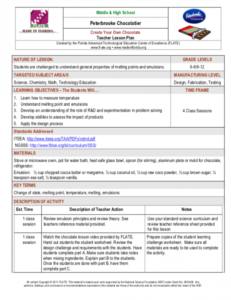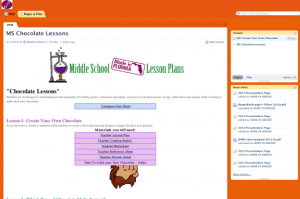Browse Resources
Instructional Material -- Unit of Instruction
Resources | |
|---|---|
Module Description:
This learning module, from Support Center for Microsystems Education (SCME), covers major developments and applications of biological microelectromechanical systems (BioMEMS). "There are three activities included that provide further exploration of these applications, how they...
Module Description:
This module, from the Support Center for Microsystems Education (SCME), provides an introduction to BioMEMS including the emergence of BioMEMS into MEMS technologies and the major characteristics of BioMEMs. "This learning module explains what "BioMEMS" are and how they are used...
Module Description:
This module, from Support Center for Microsystems Education (SCME), provides "introductory material on various Microelectromechanical Systems (MEMS) that are being designed or currently being used for therapeutics." This module is divided into the following four units: Knowledge...
Module Description:
This module, from Support Center for Microsystems Education (SCME), provides "an overview of biomolecules, what are they, types of biomolecules, and how microtechnology is using biomolecules or exploiting their functions for micro and nanosized transducers, sensors and...
Module Description:
This learning module from the Support Center for Microsystems Education introduces students to the different types of cells, aspects of cell growth, and the types of organelles found within cells. The material focuses on cells in relation to bioMEMS (bio- microelectromechanical...
Module Description:
This module, from Support Center for Microsystems Education (SCME), provides information on "the general safety rules for facilities and laboratories that use chemicals, and [allows] students the opportunity to demonstrate their understanding of these rules." This module is...
Module Description:
This module, from Support Center for Microsystems Education (SCME), provides students "with the information needed to interpret chemical labels and information about specific chemicals provided on NFPA [National Fire Protection Association] diamonds and to demonstrate an...
Lesson Description:
This collection from the Florida Advanced Technological Education (FLATE) Center includes two lessons intended to help students better understand the "general properties of melting points and emulsions." The first activity, intended for middle or high school students, asks...
This activity for middle school students from the Florida Advanced Technological Education (FL-ATE) Center teaches students about melting points and emulsions while learning to make their own chocolate. This page includes two lesson plans: Create your own chocolate and Which type of chocolate melts...
In this two to three week module from InTeGrate, Interdisciplinary Teaching about Earth for a Sustainable Future, "students explore short-term climate variability resulting from atmosphere-ocean-ice interactions." Units in the module are Forecasting Climate Change Variability and Change, Deciphering...
| |
| ← Previous | Next → |
